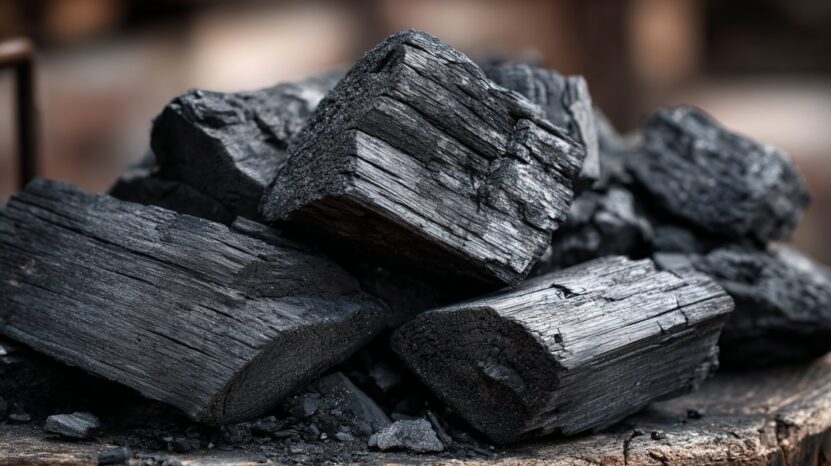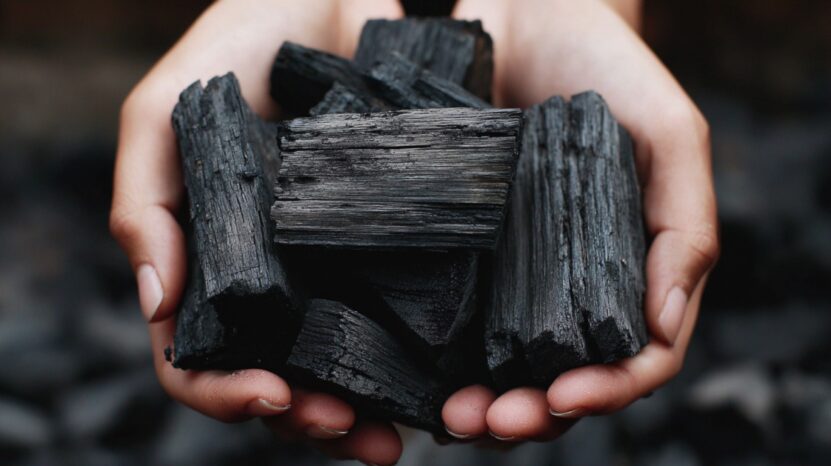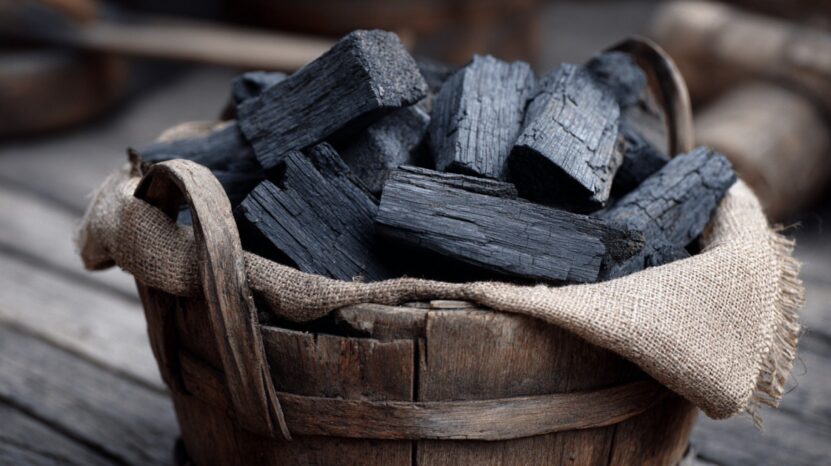Grilling has a rhythm of its own. You set up the coals, wait for that glowing bed, and then get to work with your tongs. But often, when the last burger comes off the grate, you’re left staring at a pile of half-burned chunks.
Do you really have to toss them out every single time? The short answer: no. You can reuse charcoal, and doing so can save money, cut down on waste, and still give you excellent results.
The key lies in knowing how to manage what’s left behind. This guide breaks down the pros, cons, and best practices of reusing charcoal, covering safety, performance, and the small details that make a big difference.
Key Highlights
- You can reuse larger, dry charcoal pieces by mixing them with fresh fuel.
- Always shut down coals by closing vents, never with water.
- Ash and moisture are the biggest obstacles to reliable relights.
- Store saved charcoal in a dry, sealed container for best results.
What Reusing Charcoal Actually Means
When grillers talk about reusing charcoal, they’re simply referring to relighting the unburned fraction from a previous cook.
Those black or dark gray chunks that remain after the fire dies down are still fuel.
If they’re dry and reasonably intact, they can be fired up again. In practice, you’ll get the best results when you combine reused charcoal with some fresh fuel to hit the target temperature.

The Main Types of Charcoal and Their Reuse Potential
Not all charcoal is created equal. How much you can reuse depends on what type you’re working with.
| Charcoal Type | What It Is | Typical Behavior | Reuse Potential | Notes |
| Lump | Carbonized hardwood pieces | Lights fast, burns hot, less ash | Good | Bigger chunks relight well. Store dry. |
| Briquettes | Charcoal with binders, carbon, fillers | Steady heat, more ash | Good | Larger pieces reuse better. |
| Instant-light Briquettes | Briquettes with starter solvent | Easy first light, burns like regular briquettes after solvent burns off | Fair | Don’t add to live fires. Use fresh briquettes when refueling. |
| Binchotan/White Charcoal | Dense hardwood char, very clean | Long, steady burn, minimal smoke | Excellent | Expensive but highly reusable, especially for yakitori-style cooking. |
Why Reusing Charcoal Is Worth It
There’s more to reusing charcoal than just stretching a bag further. Done right, it brings real benefits, from saving money to cutting down on waste, while still giving you reliable heat for everything you cook.
Save Money and Reduce Waste
Partially burned coals are literally unused fuel. By shaking off ash and reusing what’s left, you’re stretching every bag further.
Brands like Kingsford openly note that cooled, dried coals can go back into the next fire.
Faster Weeknight Cooking
Having pre-charred lumps sitting in your grill makes lighting easier. Add a few fresh coals, start the fire, and you’re ready to cook without waiting as long.
Less Mess Mid-Cook
For long smokes or extended barbecues, you can drop fresh briquettes on top of a live bed. The lit coals naturally ignite the fresh ones; no lighter fluid needed.
Fuel makers recommend this as a standard way to keep a steady temperature.
The Trade-offs You Need to Manage

Reusing charcoal isn’t always straightforward. There are a few drawbacks you’ll need to work around.
Smaller Pieces Burn Cooler
Used charcoal often fractures. Small fragments collapse together, restrict airflow, and burn out quickly.
Most grill manuals stress removing tiny pieces and ash before relighting.
Ash Build-Up Can Smother the Fire
Ash blocks vents and reduces airflow. Always clear the last session’s ash before starting again.
Weber, among other grill makers, highlights this in its manuals.
Moisture Is the Enemy
Wet charcoal is a headache. It smokes, struggles to light, and crumbles. Store all fuel in a dry bin with a tight lid.
Flavor Management
Spent charcoal that’s still black is essentially pure carbon and burns clean. The real culprits for bitter smoke are grease flare-ups and drippings.
Trim excess fat, use indirect setups, and keep the fire clean for the best flavors.
Safety First

Reusing charcoal only works if you keep safety in mind. Charcoal carries unique risks that can’t be ignored.
Shut the Fire Down the Right Way
The safest universal method: close the lid and vents until the fire dies out. Weber’s manuals explicitly say not to use water to extinguish charcoal, warning of steam burns, ash blowback, and damage to enameled cookers.
Kingsford allows gently dampening, but insists coals must be fully dried before reuse.
Watch Out for Carbon Monoxide
Never bring a grill or warm coals indoors. Both the CDC and CPSC warn that charcoal produces deadly, invisible carbon monoxide.
Always keep your grill outdoors in the open air.
Dispose of Ash Properly
Treat ash as live for up to 48 hours. Fire departments advise placing cooled ash in a metal container with a lid, stored away from buildings, or wrapping fully cooled ash in foil before trashing.
How to Reclaim and Reuse Charcoal
- Shut Down Safely: Close the lid and vents. Let everything cool completely.
- Clear Ash: Remove grates, stir the coals to drop ash through, and empty the catcher.
- Sort the Fuel: Keep walnut-sized or larger chunks. Discard dust, crumbles, or grease-soaked pieces.
- Mix Old with New: Use saved charcoal as the base layer. Add fresh coals on top or mix half-and-half.
- Light Cleanly: Use a chimney starter or electric lighter. Skip lighter fluid with reused fuel.
- Store Dry: Keep all charcoal in a sealed bin, away from moisture.
When to Reuse and When to Start Fresh
| Situation | Reuse Works Well | Start Fresh Recommended |
| Weeknight burgers or veggies | Yes, with a mix of old and new | Rarely needed |
| Low-and-slow barbecue at 225-275°F | Use mostly fresh with some reused on top | If old fuel is mostly small bits |
| High-heat steak searing or pizza baking | Use old as a base, then add fresh lump | For maximum heat |
| After a greasy, flare-up heavy cook | Keep only clean black chunks | Toss fat-soaked pieces |
| After rain or damp storage | Dry thoroughly before reuse | If crumbly, start fresh |
Special Notes on Different Fuel Types

Different types of charcoal don’t behave the same once they’ve been through a fire. Some are built for steady relights, while others crumble or lose performance quickly.
Knowing the quirks of each fuel type helps you decide what’s worth saving and what belongs in the ash bin.
Briquettes
Engineered for consistency, but creates more ash. Many contain mineral additives. Ash disposal should follow local waste guidelines; not all briquette ash is safe for soil use.
Lump Charcoal
Pure wood, carbonized. Large leftover chunks are highly reusable if stored dry.
Instant-light Briquettes
Useful only for initial ignition. Don’t add them to live fires, as manufacturers warn. Once the solvent burns off, leftover pieces behave like regular briquettes.
Binchotan and White Charcoal
Premium and expensive, but extremely reusable. Dense enough to survive multiple relights with minimal loss.
Health and Food Safety Angles
@darin.olien The negative effects of charcoal grilling #grilling #summer #fatalconveniences #darinolien #fyp #environment ♬ original sound – Darin Olien
Grilling safety isn’t only about the coals. The way you cook matters too.
- PAHs and HCAs: These compounds form mostly from fat drippings and high-heat charring, not from reused coals. Trim fat, use marinades, and avoid excessive burning to reduce them.
- Food Handling: Always separate raw and cooked foods, and cook meats to USDA-recommended internal temperatures. Fuel reuse doesn’t change the need for proper food safety.
Tip: Always ensure the charcoal is dry—damp charcoal can spoil the flavor and create excessive smoke.
Worked Examples
Here are a couple of good examples:
Example 1: Two Quick Dinners, One Chimney
Use half a chimney of briquettes for chicken thighs. After cooking, close the vents. Next night, shake off ash, keep larger pieces, and add a third of a chimney fresh on top. You’ll be grilling burgers in no time with less fuel.
Example 2: Five-Hour Pork Shoulder
Build a charcoal snake in a kettle with mostly fresh briquettes. Sprinkle saved chunks throughout. Light six to eight coals at the head. You’ll get a steady low-and-slow fire for hours.
FAQs
The Bottom Line
Reusing charcoal makes sense for your wallet, your schedule, and the environment, provided you do it safely. Shut your grill down properly, save the larger chunks, mix them with fresh fuel, and always keep everything dry.
Reserve full fresh loads for those big cooks when you need steady, predictable heat or maximum searing power. Handled with care, reusing charcoal is a practical habit that doesn’t sacrifice flavor or performance.
Your food will come out just as good, your setup will be easier, and your budget will stretch a little further.
